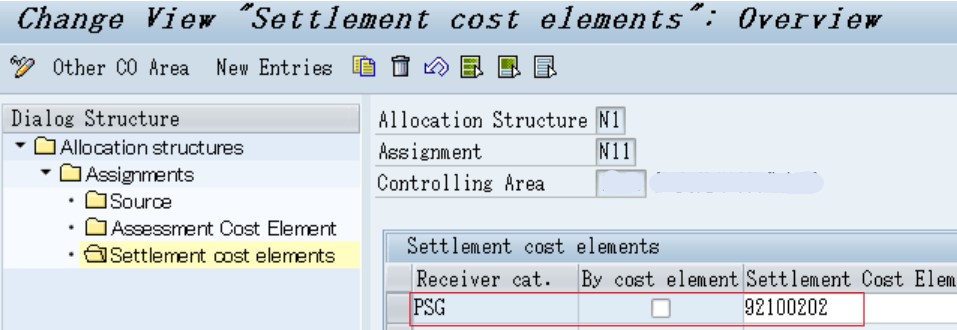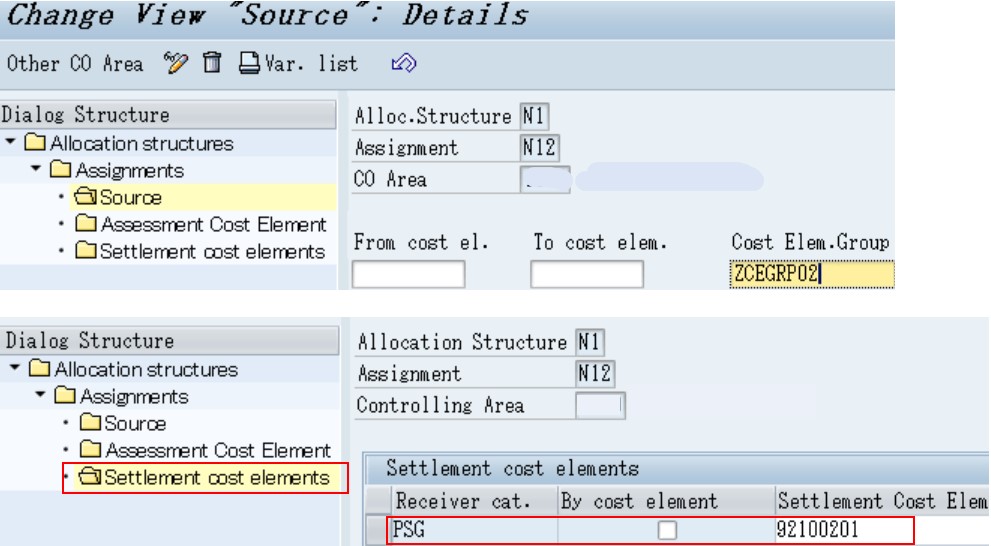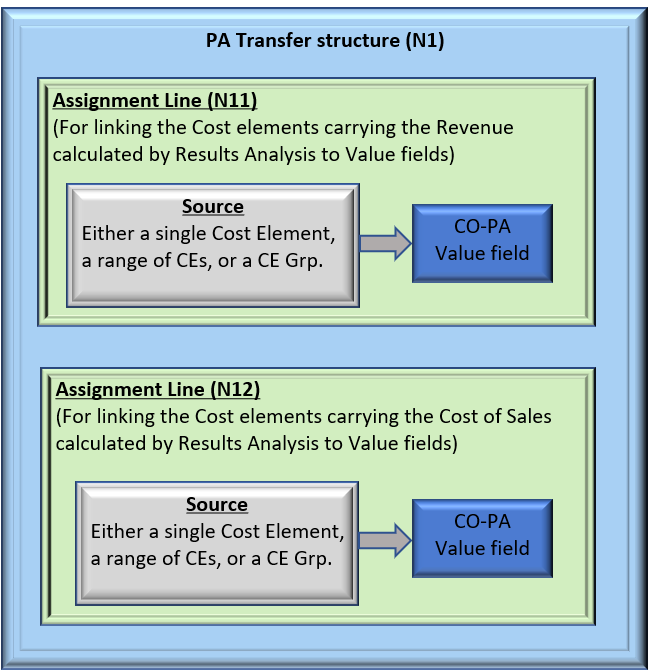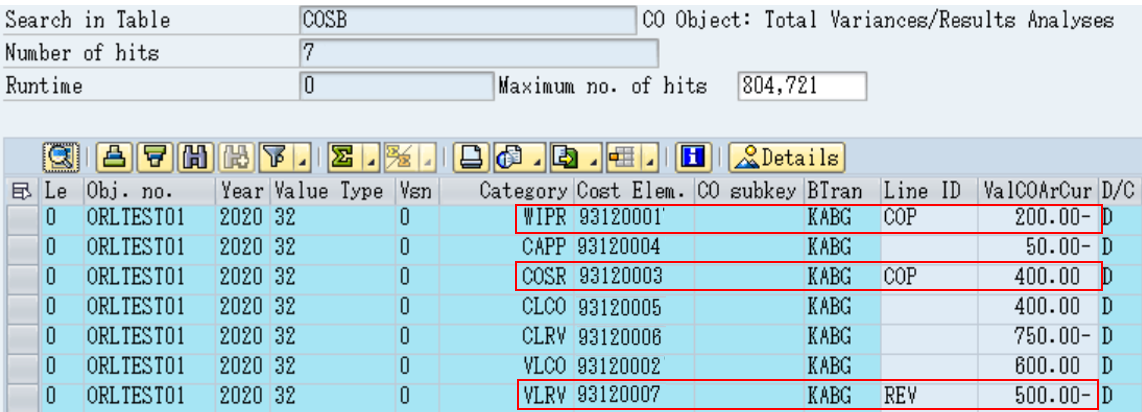
- SAP Community
- Products and Technology
- Enterprise Resource Planning
- ERP Blogs by Members
- Internal Order settlement : how to post WIP to FI;...
- Subscribe to RSS Feed
- Mark as New
- Mark as Read
- Bookmark
- Subscribe
- Printer Friendly Page
- Report Inappropriate Content
The purpose of this blog is to describe the Settlement of an Internal Order to CO-PA, FI and EC-PCA.
Major focus will be on the settlement of the amounts calculated by Results Analysis (RA), i.e., Cost-of-Sales, Revenue to CO-PA; WIP posting to FI.
This blog will try to answer the below questions:
- What kind of G/L Accounts are posted to when WIP is posted to FI?
- What is the configuration required for posting WIP, and reporting Cost of Sales & Revenue to CO-PA?
- What kind of documents are posted after an Order settlement is executed?
For background on Results Analysis, you may refer to my previous blog, "Calculating Results Analysis for Internal Orders", where we took a deep dive into the business requirement & the configuration required for performing Results Analysis and calculating the WIP amount.
In order to have an idea of the whole life of an Internal Order which is used for managing the costs & revenues posted over a couple of months, please take a look at the flow below:

Life of an Order
What kind of G/L Accounts are posted to when WIP is posted to FI?
Ans. : Two types of G/L Accounts, a P&L Account, and a Balance Sheet Account.
Why?
Well, let us first try to understand what the WIP amount is and why it is posted to FI.
WIP amount can be considered as an expense which is yet to generate a Revenue.
Since an expense posting is done but the corresponding Revenues are not recorded yet, the Income Statement (or P&L statement) would give an impression that expenses are more as compared to the Revenue.
So, in order to display a more correct picture of a company's financial situation, the burden on P&L statement is knocked-off by posting the WIP to a BS Account.
Hence, when WIP is posted, the accounting document will have 2 line items,
Debit: A BS Account
Credit: A P&L Account
'Settlement' is nothing but a transfer of costs from one object to another.
In the scenario in this blog, Internal order will transfer its costs to Profitability Segment (PSG).
What is the configuration required for posting WIP, and reporting Cost of Sales & Revenue to CO-PA?
Please note that no matter which method you use for results analysis, the configuration required for the settlement of the calculated amounts to COPA, FI & EC-PCA remains the same.
A) Configuration steps required for posting WIP Amounts to FI & EC-PCA:
Step A1. Create two G/L Accounts, a P&L Account, and a Balance Sheet Account.
(The purpose of having these two G/L Accounts has already been explained earlier.)
'License Costs Transfer (P&L Acc.)' - 40000900
(This G/L Acc. must not be created as a Cost Element)
'License Costs WIP (BS Acc.)' - 22000900
Step A2. Assign these two G/L Accounts to RA Category 'WIPR'.
IMG Path – Controlling>Product Cost Controlling>Cost Object Controlling>Product Cost by Sales Order>Period-End Closing>Results Analysis>Define Posting Rules for Settlement to Financial Accounting

B) Configuration steps required for the settlement of Cost of Sales & Revenue to CO-PA:
Step B1. Create an Allocation structure.
The settlement of data to Profitability Analysis is controlled by an Allocation structure.
It is a set-up, which links Sender Cost elements to Receiver Cost Elements.
The below illustration tries to visualize the purpose & constituents of an Allocation structure.

Allocation Structure
Create an Allocation structure N1. (T-code OKOA)

Next, create two 'Assignments',
N11 - For the settlement of Revenue Affecting Net Income
N12 - For the settlement of Cost of Sales (or Costs Affecting Net Income)

Here, the 'Source' of Assignment N11 is the Cost Element in CE Group ZCEGRP01.
We have only one Cost element in this group.
'COGS Revenue for License' - 93120007 (Sec. CE of CE Category 31) - (After Results Analysis, 'Revenue Affecting Net Income' is stored in this CE.)
Next, we need to define the Cost element to which the costs will be settled.
We use a Cost Element of Category 21 (Internal Settlement) for this purpose.
License Revenue Settlement Acc. (92100202)
For a settlement to CO-PA, the settlement category must be 'PSG' (Profitability Segment).

This completes the setup of Assignment N11.
Next, we set up Assignment N12 with the same underlying concept.
Here, the 'Source' of Assignment N12 is the Cost Element in CE Group ZCEGRP02.
We have only one Cost element in this group.
'COGS Revenue for License' - 93120007 (Sec. CE of CE Category 31)
(After Results Analysis, Cost of Sales is stored in this CE.)

Step B2. Create a PA Transfer structure.
A PA Transfer structure is a rule or a set-up, which will link Cost elements to CO-PA Value fields.
The below illustration tries to visualize the purpose & constituents of a PA Transfer structure.

PA Transfer Structure
Create a PA Transfer structure 'N1'. (T-code OKOA)

Create two Assignment lines each for License Revenues & License costs.

The 'Source' of Assignment Line N11 contains the below Cost Element in CE Group ZCEGRP01.
'COGS Revenue for License' - 93120007 (Sec. CE of CE Category 31)
(After Results Analysis, Revenue Affecting Net Income is stored in this CE.)
We assign the above Cost element to a Value field called 'License Revenues' (VVA04).

Similarly, create another Assignment Line 'N12' for License Costs.

The 'Source' of Assignment Line N12 contains the below Cost Element in CE Group ZCEGRP02.
'COGS Revenue for License' - 93120003 (Sec. CE of CE Category 31)
(After Results Analysis, Cost of Sales is stored in this CE.)
We assign the above Cost element to a Value field called 'License Costs' (VVC05).

Step B3. Create a settlement profile.
Default the above created Allocation Structure and PA Transfer Structure to this settlement profile.
IMG path --> Controlling> Product Cost Controlling> Cost Object Controlling> Product Cost by Sales Order> Period End Closing> Settlement> Create Settlement Profile

Step B4. Assign the above settlement profile to your Order type.
T-code KOT2_OPA.
This defaults the settlement profile when you create an Internal Order master data.
However, please note that unlike the settlement profile, the 'Results Analysis key' cannot be set as default through Order type.
You need to create a Model order for that purpose.

With this last step, the configuration required for settlement is over, and we are ready to execute an order settlement.
Let us take the same business scenario as in my previous blog, say for a certain Internal order which captures the costs and revenues of License, below was the Results Analysis at a certain period end.
(RA Method Used in this example = (01) Revenue-Based Method with Profit Realization)
Perform RA for the Order and save it. (T-code KKA1)

Let us do a little bit of calculation here.
For the Internal Order in this example,
Total Costs planned = 80,000
Total Revenue planned = 100,000
Actual costs = 60,000
Actual Revenue = 50,000
So, Cost of Sales is calculated as
C(PA) = PoC * C(p)
= R(a)/R(p) * C(p)
= 50,000/100,000*80,000
= 40,000
Revenue Affecting Net Income = PoC * R(p) = R(a) = 50,000
WIP = Actual costs - Cost of Sales
= 60,000 - 40,000 = 20,000
Once the RA Analysis is saved, the below entries are created in Table COSB.

Category for Variance/Results Analysis | Short Description |
WIPR | Work in Process with Requirement to Capitalize |
CAPP | Capitalized Profit |
COSR | Cost of Sales with Requirement to Capitalize |
CLCO | Calculated Costs |
CLRV | Calculated Revenue |
VLCO | Valuated Costs |
VLRV | Valuated Actual Revenue/Revenue Affecting Net Income |
Finally, perform settlement of the Internal Order. (T-code KO88)

Settlement Results:
Observe that the Sender is Internal Order (ORD LTEST01) & Receiver is a Profitability Segment (PSG).
However, please note that the PSG is only posted statistically.

As a result of this settlement, the below types of documents are posted:
- Accounting (FI) Document. (2 No. of Docs.)
- Profit Center Account (PCA) Document.
- Controlling (CO) Document.
- Profitability Analysis (PA) Document.
Accounting Document generated for WIP posting to FI:
As we can observe from the below document, the WIP Amount is Credited from P&L Account and Debited to the BS Account.

Profit Center Document generated as a result of posting to EC-PCA:
CO-PA Document line item showing that Value fields are updated with Revenue and Cost of Sales.

Controlling Document generated on account of statistical posting from Internal Order to Profitability Segment:
Accounting Document generated with reference to CO document posted for transferring Cost of Sales & Revenue to CO-PA.
A few important observations:
- Since the settlement to CO-PA is a statistical transfer of costs, the Internal Order is not credited during this settlement. (PSG here is a statistical cost object)
- No Special Configuration is required for posting WIP to EC-PCA.
If EC-PCA is active in the system, and the WIP BS Account and P&L Account is maintained in 3KEH (or FAGL3KEH), then a Profit Center Document will be posted automatically.
I hope this blog was able to explain not only the configuration required for an order settlement; but also the concepts behind WIP posting to FI; as well as Cost of Sales & Revenue posting to CO-PA.
Thank you
Copyrights reserved.
Copying my content and publishing it on other sites will be subject to legal action.
- SAP Managed Tags:
- FIN Controlling,
- FIN Cost Object Controlling,
- FIN Profitability Analysis
You must be a registered user to add a comment. If you've already registered, sign in. Otherwise, register and sign in.
-
"mm02"
1 -
A_PurchaseOrderItem additional fields
1 -
ABAP
1 -
ABAP Extensibility
1 -
ACCOSTRATE
1 -
ACDOCP
1 -
Adding your country in SPRO - Project Administration
1 -
Advance Return Management
1 -
AI and RPA in SAP Upgrades
1 -
Approval Workflows
1 -
ARM
1 -
ASN
1 -
Asset Management
1 -
Associations in CDS Views
1 -
auditlog
1 -
Authorization
1 -
Availability date
1 -
Azure Center for SAP Solutions
1 -
AzureSentinel
2 -
Bank
1 -
BAPI_SALESORDER_CREATEFROMDAT2
1 -
BRF+
1 -
BRFPLUS
1 -
Bundled Cloud Services
1 -
business participation
1 -
Business Processes
1 -
CAPM
1 -
Carbon
1 -
Cental Finance
1 -
CFIN
1 -
CFIN Document Splitting
1 -
Cloud ALM
1 -
Cloud Integration
1 -
condition contract management
1 -
Connection - The default connection string cannot be used.
1 -
Custom Table Creation
1 -
Customer Screen in Production Order
1 -
Data Quality Management
1 -
Date required
1 -
Decisions
1 -
desafios4hana
1 -
Developing with SAP Integration Suite
1 -
Direct Outbound Delivery
1 -
DMOVE2S4
1 -
EAM
1 -
EDI
2 -
EDI 850
1 -
EDI 856
1 -
EHS Product Structure
1 -
Emergency Access Management
1 -
Energy
1 -
EPC
1 -
Find
1 -
FINSSKF
1 -
Fiori
1 -
Flexible Workflow
1 -
Gas
1 -
Gen AI enabled SAP Upgrades
1 -
General
1 -
generate_xlsx_file
1 -
Getting Started
1 -
HomogeneousDMO
1 -
IDOC
2 -
Integration
1 -
Learning Content
2 -
LogicApps
2 -
low touchproject
1 -
Maintenance
1 -
management
1 -
Material creation
1 -
Material Management
1 -
MD04
1 -
MD61
1 -
methodology
1 -
Microsoft
2 -
MicrosoftSentinel
2 -
Migration
1 -
MRP
1 -
MS Teams
2 -
MT940
1 -
Newcomer
1 -
Notifications
1 -
Oil
1 -
open connectors
1 -
Order Change Log
1 -
ORDERS
2 -
OSS Note 390635
1 -
outbound delivery
1 -
outsourcing
1 -
PCE
1 -
Permit to Work
1 -
PIR Consumption Mode
1 -
PIR's
1 -
PIRs
1 -
PIRs Consumption
1 -
PIRs Reduction
1 -
Plan Independent Requirement
1 -
Premium Plus
1 -
pricing
1 -
Primavera P6
1 -
Process Excellence
1 -
Process Management
1 -
Process Order Change Log
1 -
Process purchase requisitions
1 -
Product Information
1 -
Production Order Change Log
1 -
Purchase requisition
1 -
Purchasing Lead Time
1 -
Redwood for SAP Job execution Setup
1 -
RISE with SAP
1 -
RisewithSAP
1 -
Rizing
1 -
S4 Cost Center Planning
1 -
S4 HANA
1 -
S4HANA
3 -
Sales and Distribution
1 -
Sales Commission
1 -
sales order
1 -
SAP
2 -
SAP Best Practices
1 -
SAP Build
1 -
SAP Build apps
1 -
SAP Cloud ALM
1 -
SAP Data Quality Management
1 -
SAP Maintenance resource scheduling
2 -
SAP Note 390635
1 -
SAP S4HANA
2 -
SAP S4HANA Cloud private edition
1 -
SAP Upgrade Automation
1 -
SAP WCM
1 -
SAP Work Clearance Management
1 -
Schedule Agreement
1 -
SDM
1 -
security
2 -
Settlement Management
1 -
soar
2 -
SSIS
1 -
SU01
1 -
SUM2.0SP17
1 -
SUMDMO
1 -
Teams
2 -
User Administration
1 -
User Participation
1 -
Utilities
1 -
va01
1 -
vendor
1 -
vl01n
1 -
vl02n
1 -
WCM
1 -
X12 850
1 -
xlsx_file_abap
1 -
YTD|MTD|QTD in CDs views using Date Function
1
- « Previous
- Next »
- Condition Contract - Transfer of settlement documents to COPA in Enterprise Resource Planning Q&A
- SAP S/4HANA Cloud Private Edition | 2023 FPS01 Release – Part 2 in Enterprise Resource Planning Blogs by SAP
- S4HANA Settlement Management : Process Overview in Enterprise Resource Planning Q&A
- Deletion of Master and Transactional Data (ILM) in SAP S/4HANA Cloud,Public Edition-Link Collection in Enterprise Resource Planning Blogs by SAP
- Posted Accruals not getting reversed during Delta Accruals Settlement in Enterprise Resource Planning Q&A
| User | Count |
|---|---|
| 2 | |
| 2 | |
| 2 | |
| 2 | |
| 2 | |
| 2 | |
| 2 | |
| 1 | |
| 1 | |
| 1 |